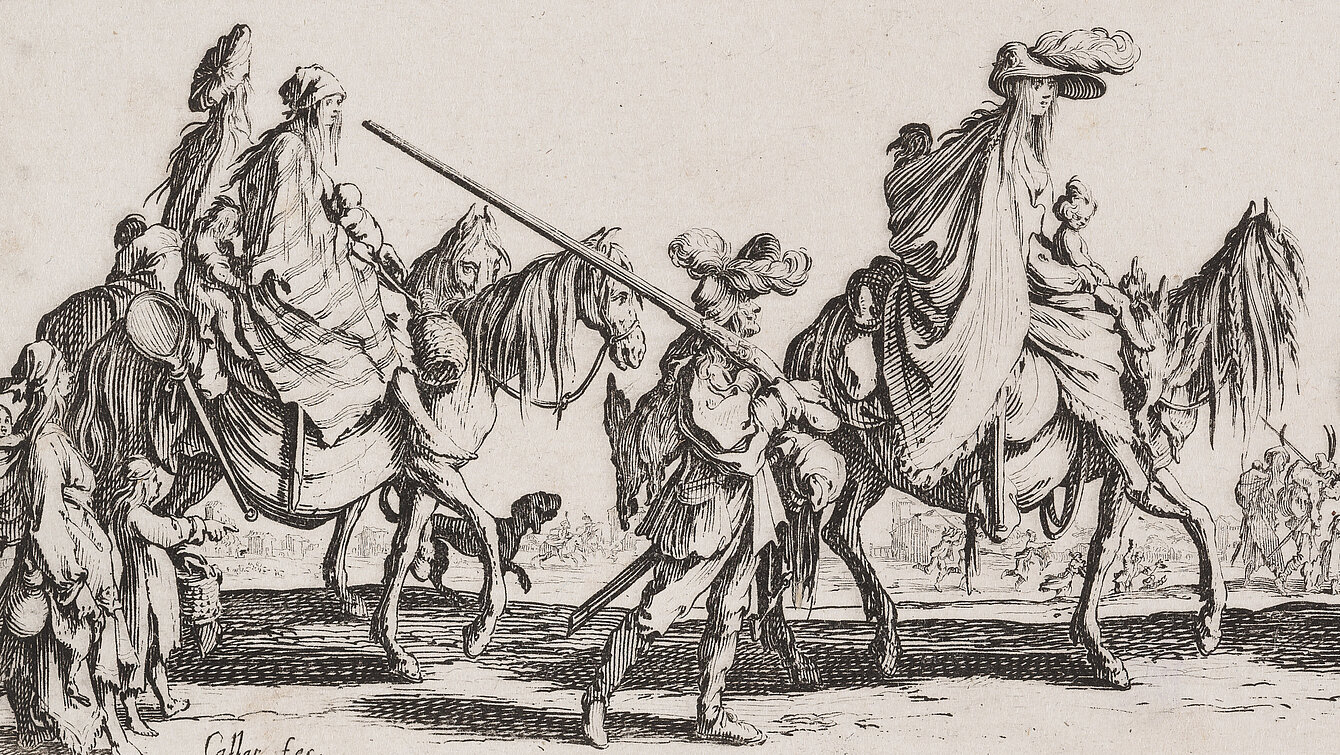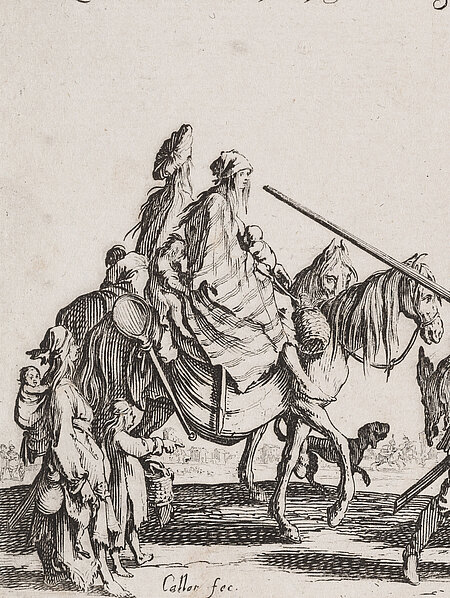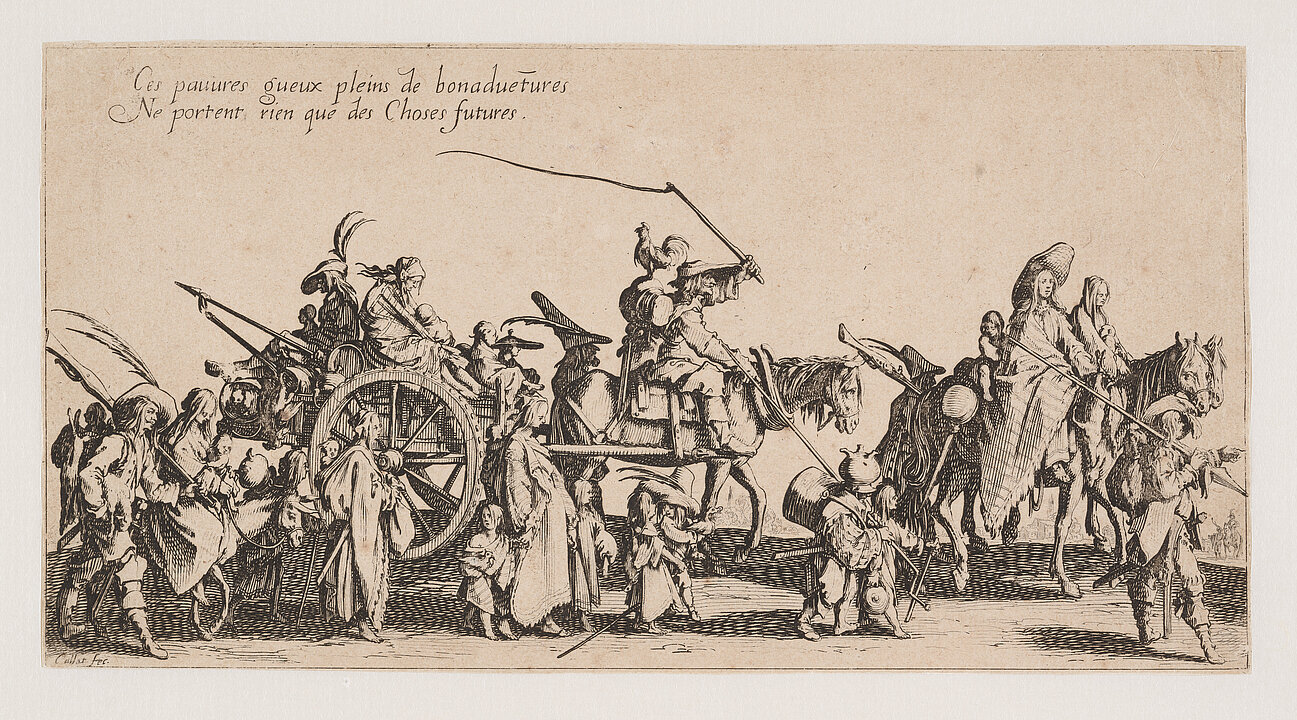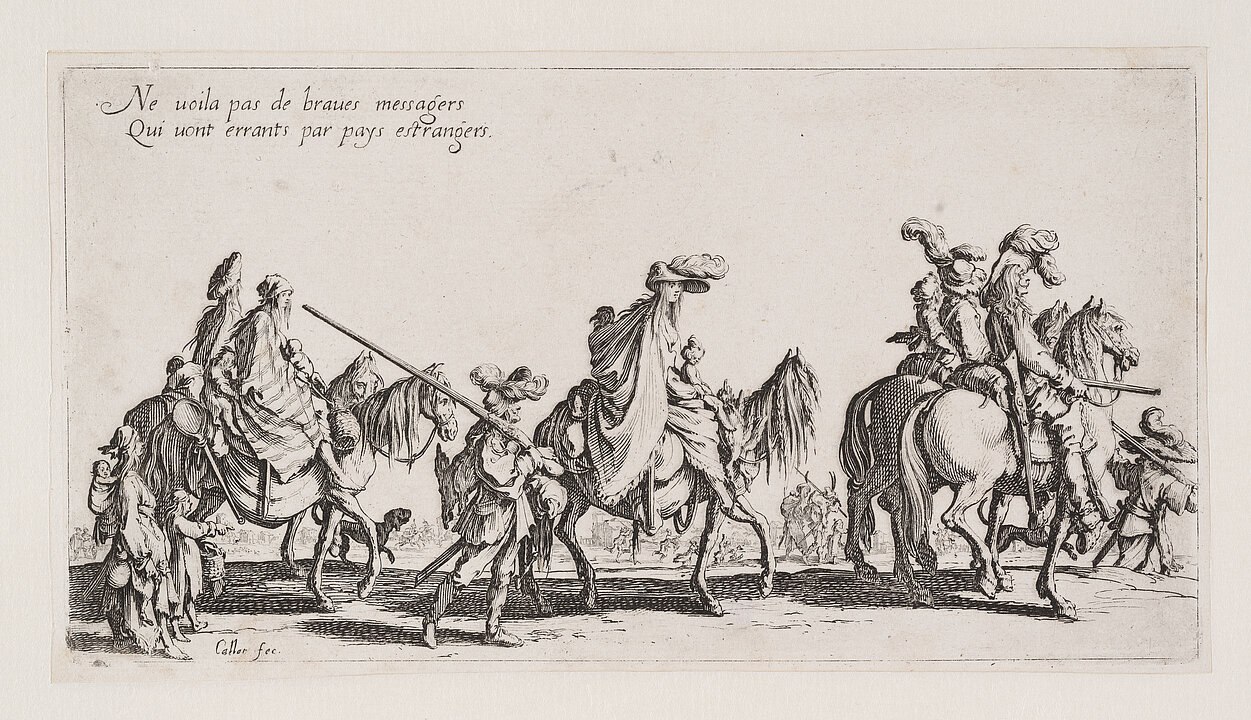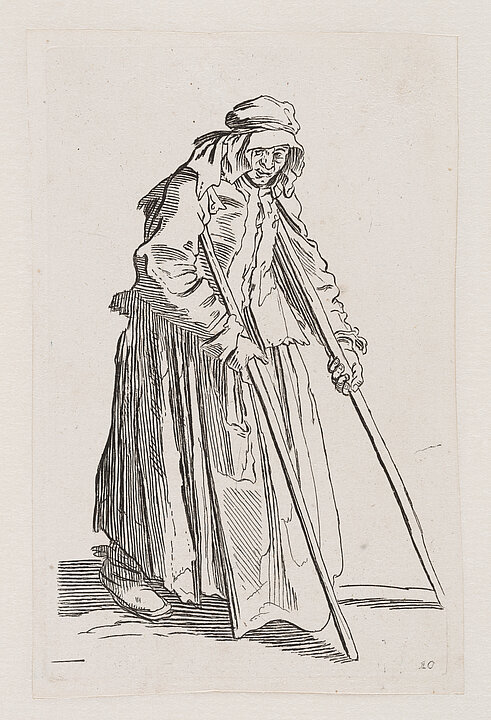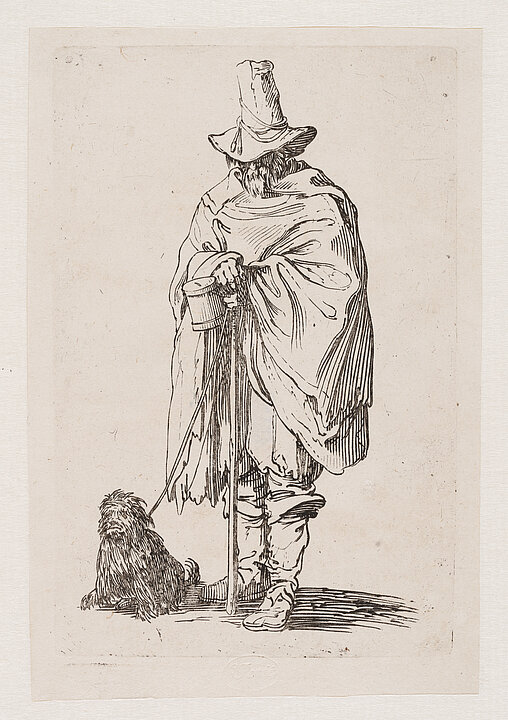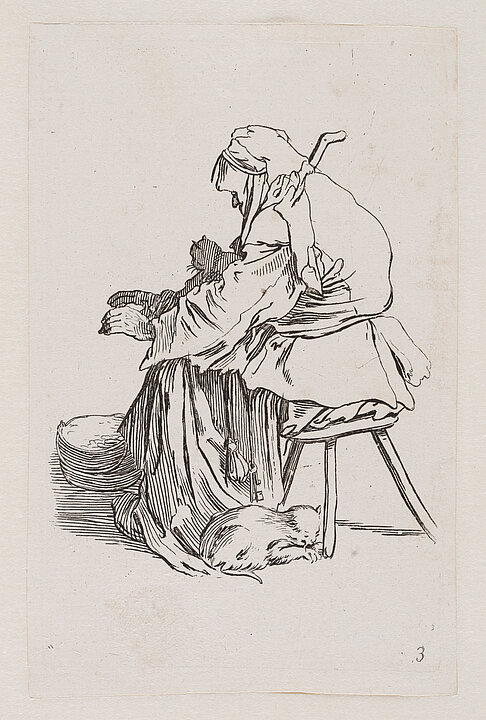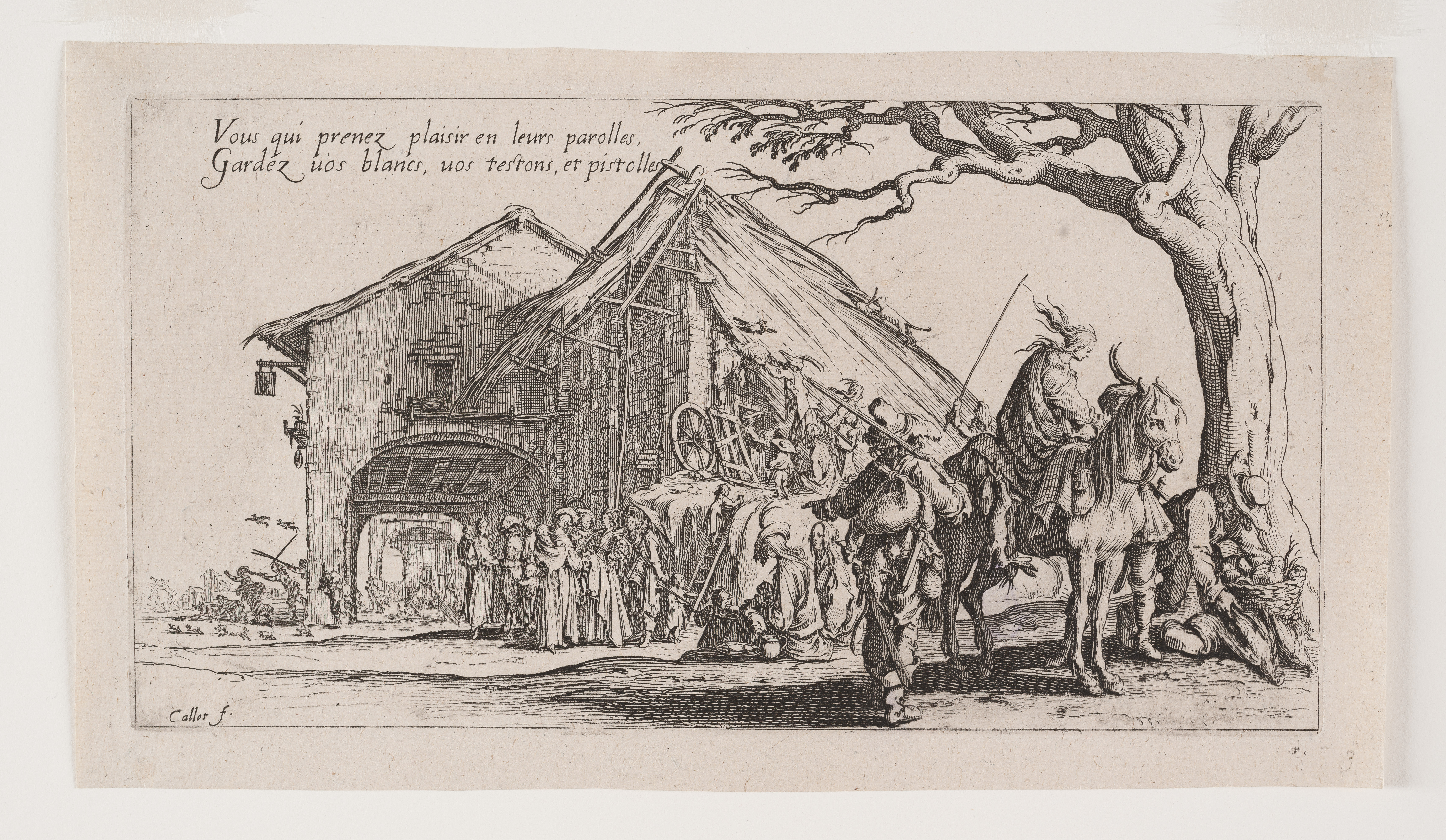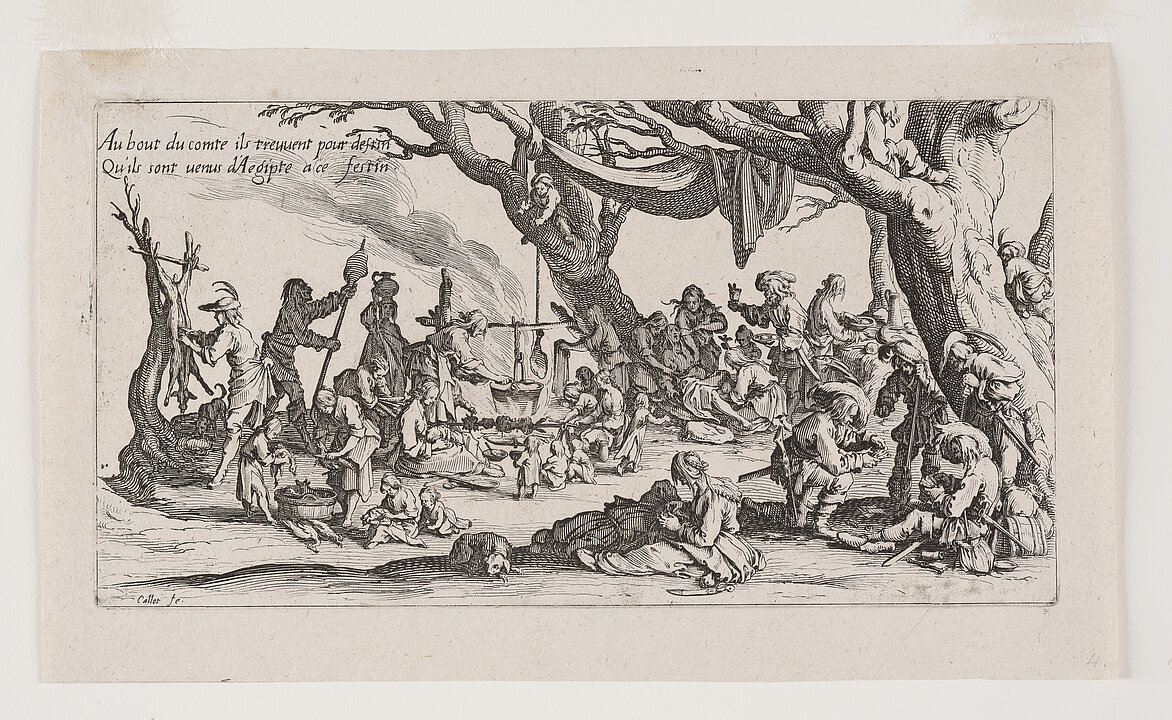The four-part series The Bohemians is one of the most famous works of the Lorraine artist Jacques Callot. The engraver conceived of these prints in the form of a long frieze. The lines at the bottom of each sheet extend into the next so they can be joined together. The copperplates have been preserved in Musée Lorrain in Nancy.
The first two sheets depict a group of figures marching past carrying their belongings, seemingly in silence. Pots, pans, and small barrels, as well as weapons and many animals such as geese, chicken, pigeons, or cats are clearly recognisable. What stands out is their clothing, with billowing cloaks and large hats, some of which are decorated with feathers. Numerous children are sitting on the wagons, the horses, or wandering alongside them. Each person has their own distinct character. Callot’s precise powers of observation and his ability to empathise with different segments of society enable him to render anonymous people as individuals with just a few strokes.
Villagers can frequently be seen standing in the background, watching the procession with suspicion. The inscriptions in the prints also point to this negative view of the travelling people.




















